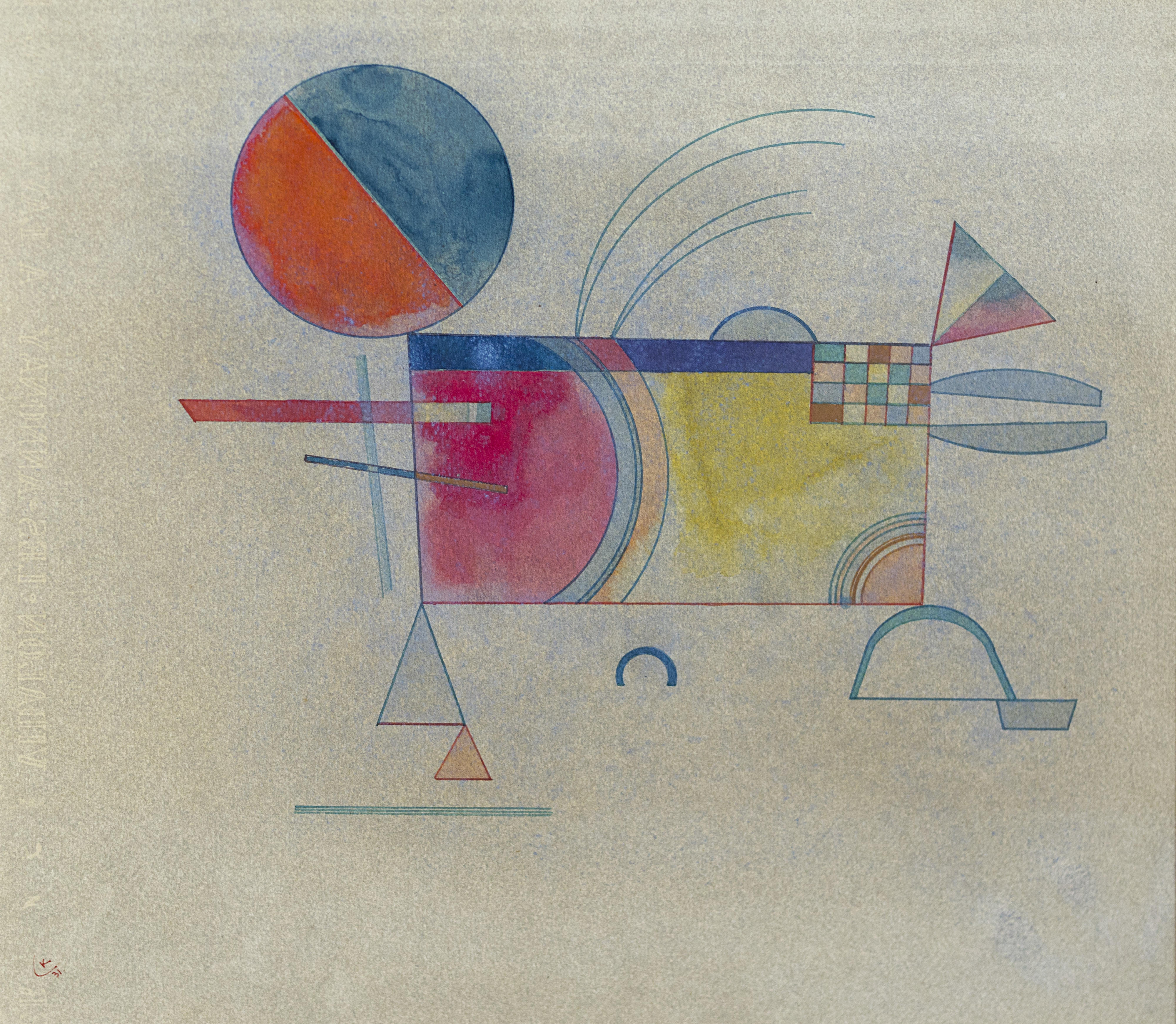Wassily Kandinskij
b. 1866, Moscow
d. 1944, Neuilly-sur-Seine
Rectangle orné (Ornate Rectangle)
1931
Watercolor on paper
31.5 x 35 cm (12 3/8 x 13 3/4 in.)
Provenance
Galka E. Scheyer, Los Angeles, 1933–1945,
Nina Kandinskij, Paris,
Gildas Fardel, 1956,
Paris, Drouot, Le Roux-Morel, 1 December 1999, lot 93,
Where acquired by the present owner.
Literature
Description
Wassily Kandinskij was one of the most important pioneers of Abstraction and, particularly, the main exponent of Non-Geometric Abstraction, also known as Lyrical Abstraction.
Even if geometric elements are present in his paintings, the artist resisted representing them in rigid compositions, which are typical of the second type of abstract art called Geometric Abstraction, or “Cold Abstraction”. The Non-Geometric Abstraction features flowing lines and profound but delicate colours instead, chosen by the artist to attempt to give sensitivity and feelings a shape.
Music is another essential component of Kandinskij’s work as he studied classical music from a young age. He wanted to combine this influence with his painting, so his compositions gradually transformed into rhythmic, geometric ones reminiscent of musical notes on a staff.
Completed in 1931, the watercolor Rectangle orné was created during the artist’s later and more mature period of painting, while he was working as a teacher at the Bauhaus in Dessau. Therefore, it marks a culmination of the artist’s conclusions in his exploration of abstract art, beginning from Der Blaue Reiter (the artistic group established in the early 1910s together with the German painter Franz Marc) to the Bauhaus period (from the early twentieth century to 1933, when Kandinskij stopped teaching both in Weimar and Dessau).
In Rectangle orné, the rectangle, the dominant form, just as the title suggests, appears enriched with triangles, circles and small, assembled squares, as well as straight and curved lines all around, which coalesce in a kind of balance. That is exactly what the artist articulated with the abstract principles he promoted in his teaching and especially in his very well-known Point and Line to Plane, published in 1926. His main theoretical book focuses on the interaction between various geometric elements and the plane; in other words on the harmony that can be created thanks to their arrangement, according to Kandinskij’s Theory of Correspondences.
The harmonious interaction between forms was fundamental during the Bauhaus period, when Kandinskij produced several works with a strong geometric sense derived from Russian Constructivism, to which he was exposed during the war years he spent in Moscow and based primarily on that artistic circle and its inherent values.
However, these works show a growing presence of floating shapes too, which reveal a particular debt to Kandinskij’s Bauhaus colleague Paul Klee, who likely introduced the artist to the use of the “spray” technique in his watercolors. First used in 1927, the technique of using an atomiser to spray thinly diluted watercolour on the sheet characterizes most of Kandinskij's works on paper from 1928–30, in which elements become transparent and seem almost immaterial. In fact, Rectangle orné’s plane appears slightly speckled thanks to this technical innovation, which lends the work a chromatic and luminous vibrancy.


